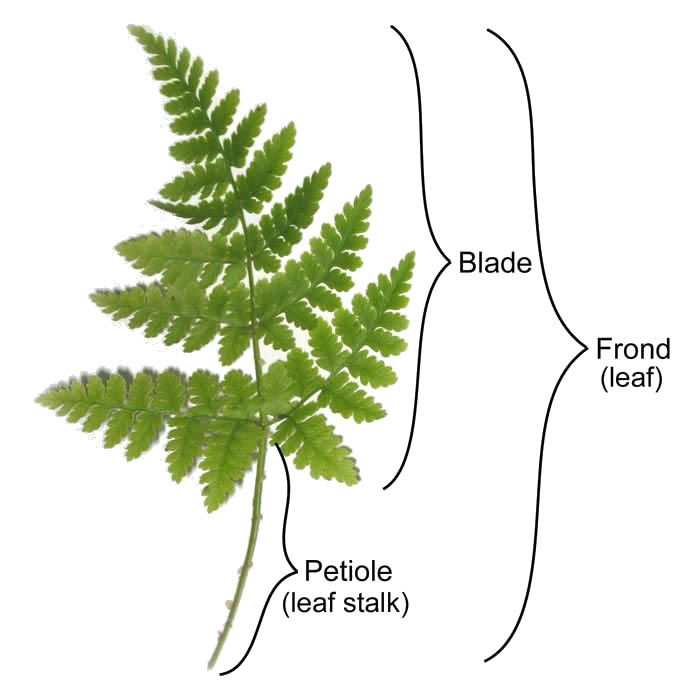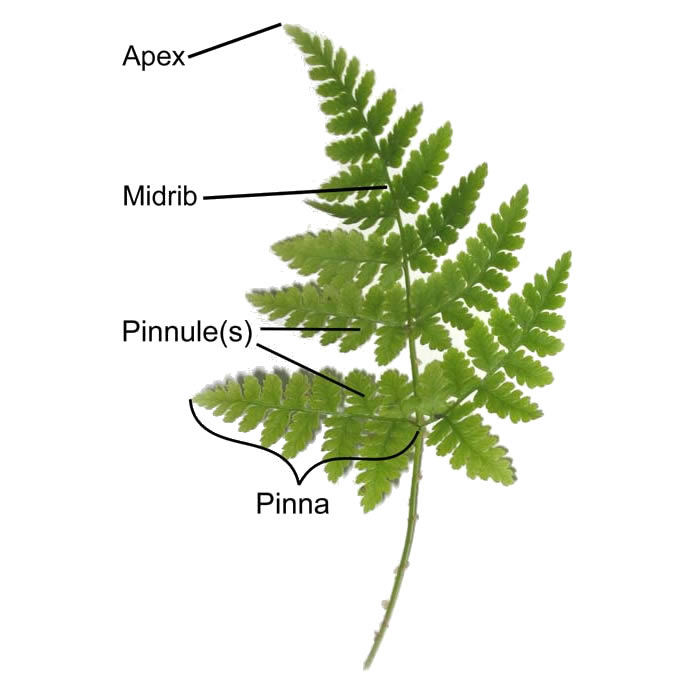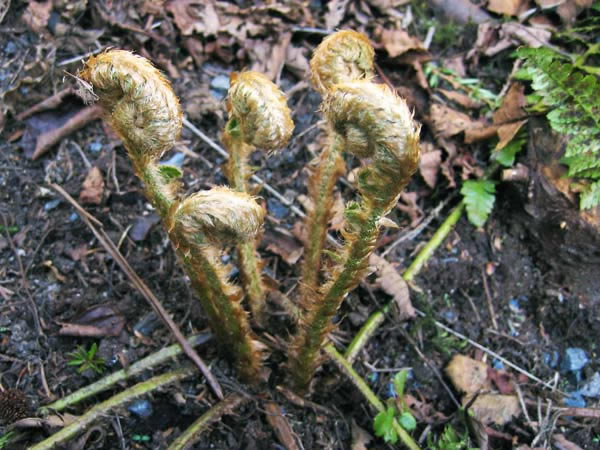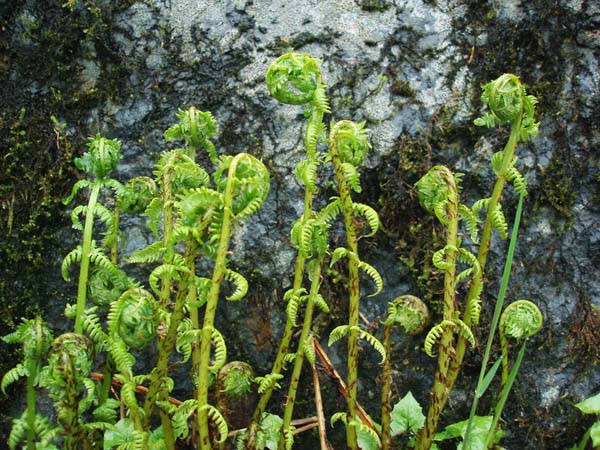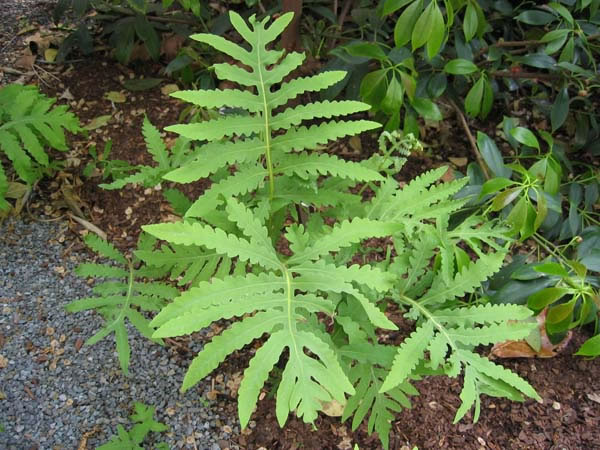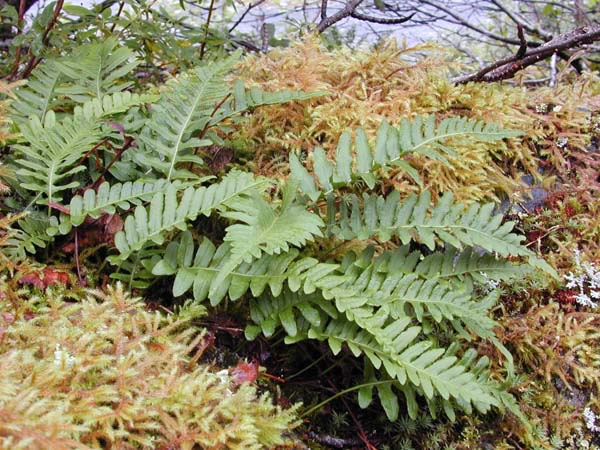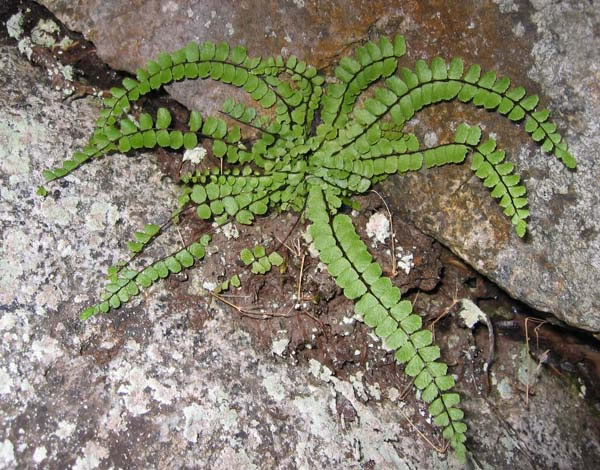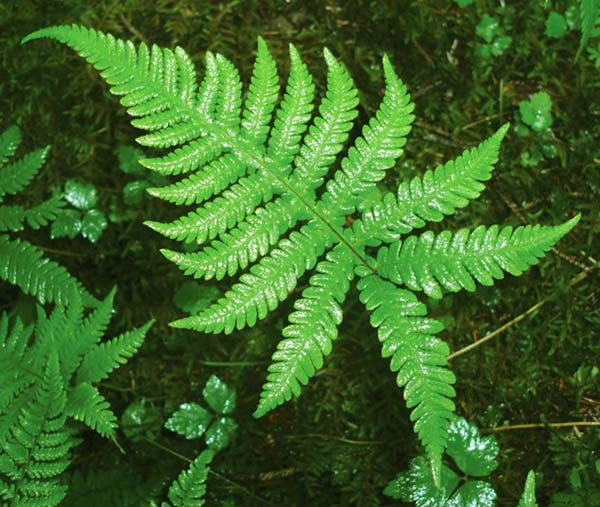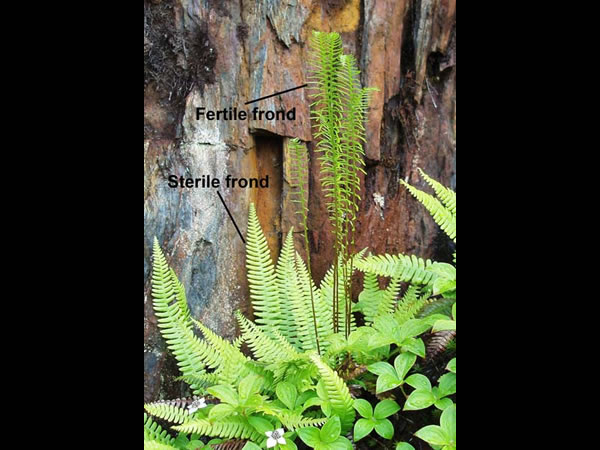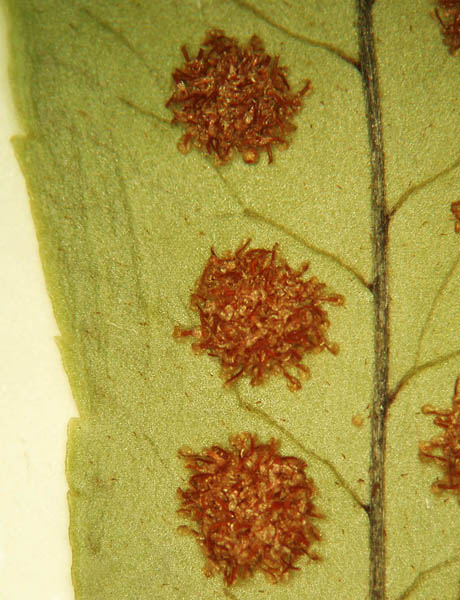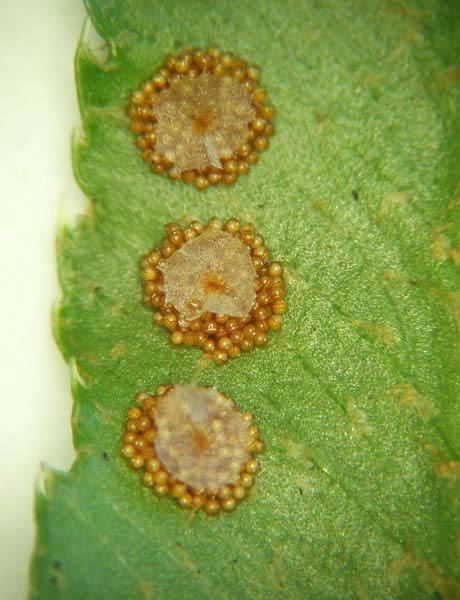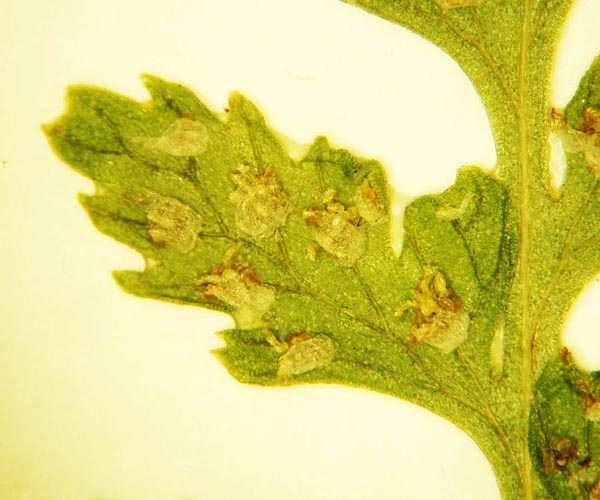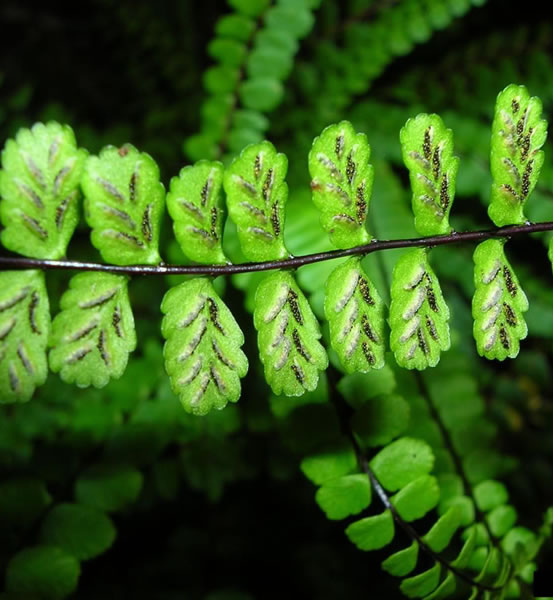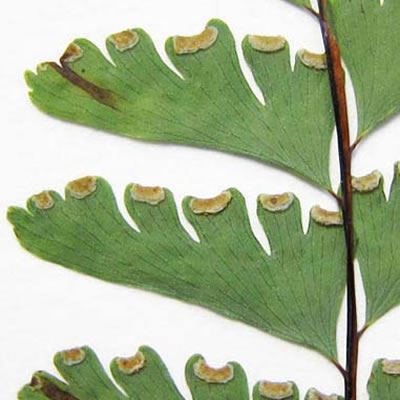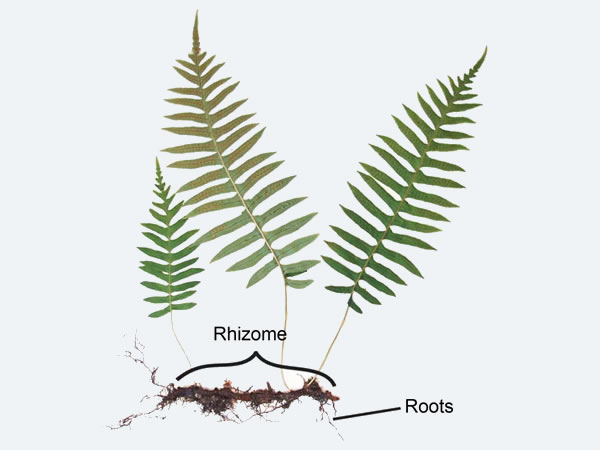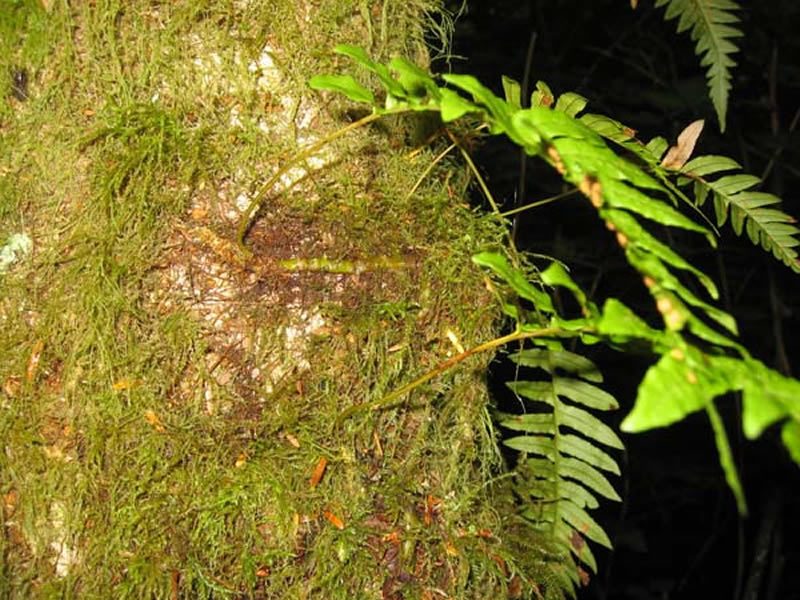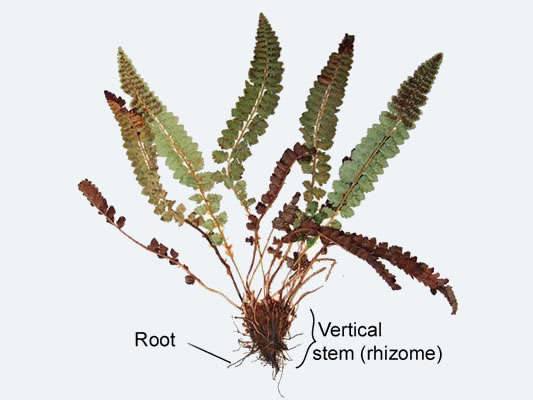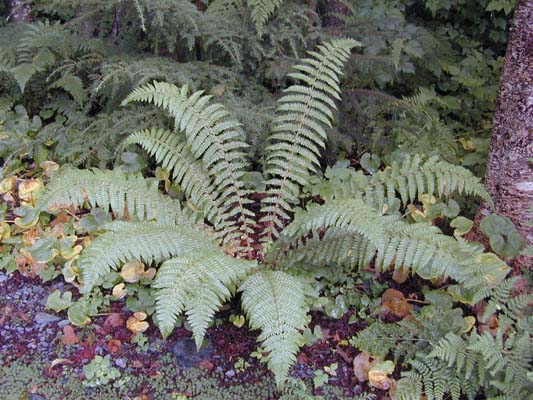Fern Structure
Ferns can have some very unusual forms and structures. The following describes fern structure and forms that people typically encounter.
Leaves
The leaves of ferns are often called fronds. Fronds are usually composed of a leafy blade and petiole (leaf stalk). Leaf shape, size, texture and degree of complexity vary considerably from species to species.
The midrib is the main axis of the blade, and the tip of the frond is its apex.
The blade may be variously divided, into segments called pinnae; single leaflets are pinna. Pinna may be further divided, the smallest segments are pinnules.
Fiddleheads
As new fronds emerge, generally in the spring, they unroll, these unrolling fronds are called fiddleheads.
Leaf Divisions
Depending on the species, fern leaves display a wide array of divisions. Various degrees of leaf divisions are shown in this series of frond silhouettes.
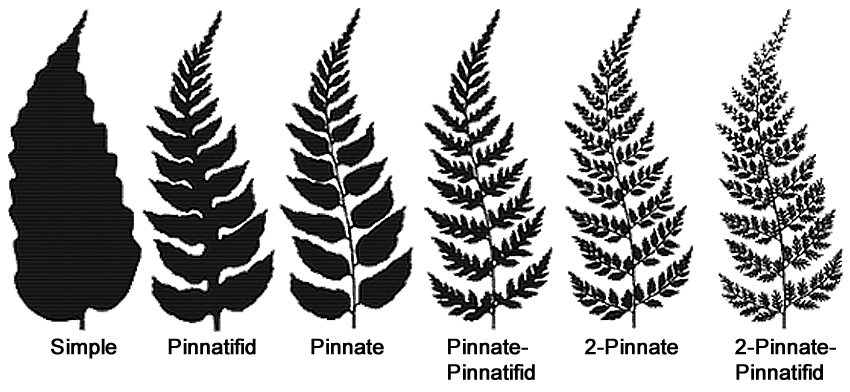
Simple
The fronds are undivided.
Pinnatifid
The frond is divided into segments divided from each other almost to the rachis.
Pinnate
The frond is divided into segments completely separated from each other.
Further Divided
Many ferns are known for their lacy appearance, these ferns have fronds that are even further divided.
- 2-pinnate (bipinnate): fronds are divided two times.
- 3-pinnate (tripinnate): fronds are divided three times.
- In cases were these secondary divisions do not cut to the rachis or the axis of the pinna the term pinnatifid is added to the degree of cutting to describe this type of frond dissection.
Examples of ferns displaying various degrees of leaf divisions:
Dimorphic Fronds
Some ferns have two kinds of fronds: fertile fronds (leaves with sporangia) and sterile fronds (leaves lacking sporangia). Ferns with two kinds of leaves are referred to as dimorphic. Examples of dimorphic ferns are deer fern (Blechnum spicant) and cinnamon fern (Osmunda cinnamomea).
Other ferns, such as the moonworts have sterile pinnae and fertile pinnae on the same leaf. This can be seen in the moonwort fern (Botrychium lunaria).
Fern Sori
Sori (singular: sorus) are groups of sporangia (singular: sporangium), which contain spores. Sori are usually found on the underside of the blade. Young sori are commonly covered by flaps of protective tissue called indusia (singular: indusium). See the following graphic.
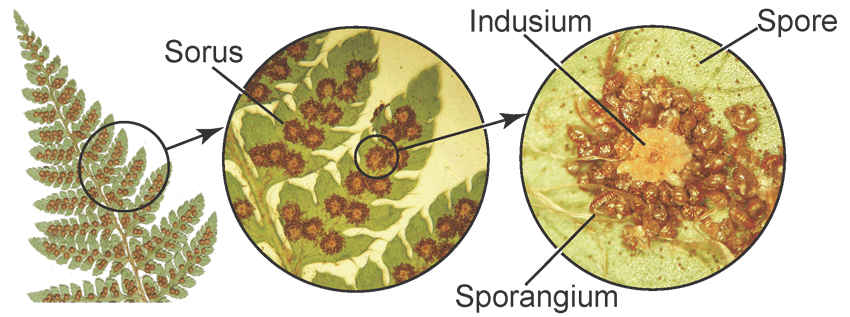
Sori can vary considerably in shape, arrangement, location and covering depending on the kind of fern. These differences can be useful for identifying ferns. However, depending on the time of year, sori and indusia may not be useful characters because they may be too immature or too mature to be diagnostically useful.
The following are some of the more common kinds of sori.
Sori with false indusia. False indusia are not formed of specialized tissue (as are true indusia), but are leaf tissue rolled or folded over the sori. They can be marginal, along the side of the pinna, or at the tip of the pinna as in the maidenhair ferns.
Fern Stems and Roots
Fern stems (rhizomes) are often inconspicuous because they generally grow below the surface of the substrate in which the fern is growing. This substrate can be soil, moss or duff. People often confuse rhizomes with roots. Fern roots are generally thin and wiry in texture and grow along the stem. They absorb water and nutrients and help secure the fern to its substrate.
Stems can be short-creeping with fronds that are somewhat scattered along the stem, such as the fragile fern; or, stems can be long-creeping resulting in fronds scattered along the stem, exemplified by the licorice fern.
Stems can be vertical, producing rosettes of leaves, as displayed by the sword ferns.


